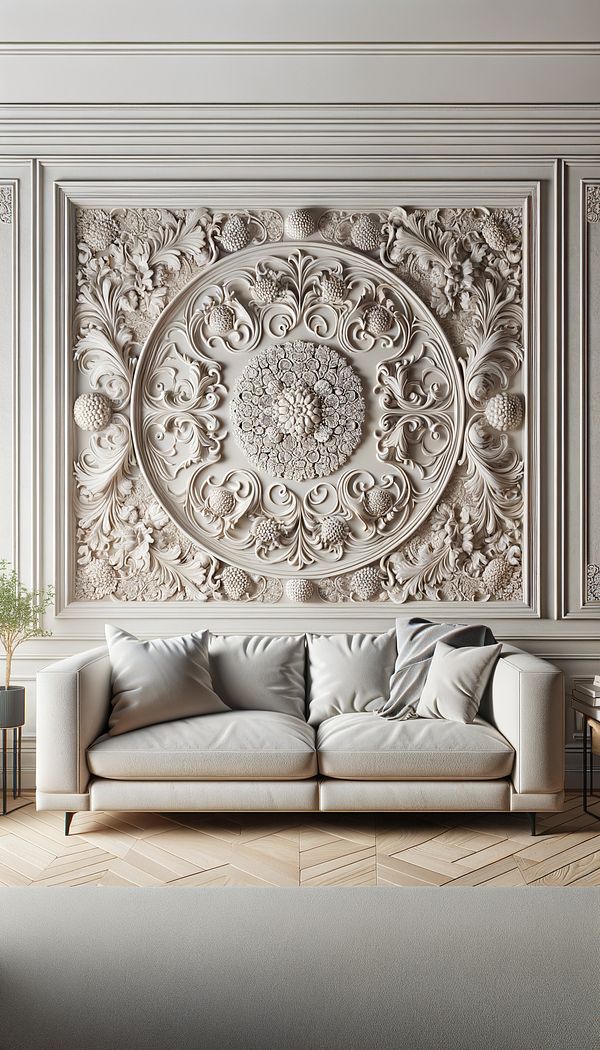What is Low Relief?
Low relief is a decorative carving that protrudes slightly from its background.
Description
Low relief, also known as "bas-relief," is a sculptural technique where the figures or motifs are only slightly raised from the background. This form of art has a long history, spanning multiple cultures and eras, and is often used in architectural ornamentation, coin design, and decorative arts. Unlike high relief sculptures that significantly stand out from the background, low relief designs are subtle and create a gentle three-dimensional effect, which adds texture and visual interest without overwhelming the viewer.
In interior design, low relief can be integrated into various elements such as wall treatments and finishes, furniture pieces, and decorative objects. This technique can bring depth and dimension to otherwise flat surfaces, providing a sophisticated touch to the interior space. It's particularly popular in styles that favor intricate details, such as Baroque, Renaissance, and Art Nouveau. Low reliefs can be crafted from a wide range of materials, including plaster, wood, metal, and stone, allowing for diverse aesthetic expressions.
Usage
Low relief sculptures are often found adorning the walls of classical and historic buildings, as panel decorations in luxurious interiors, or as intricate details on furniture. In modern settings, low relief designs may be used in more minimalist ways, such as subtle motifs on doors or incorporated into lighting [[fixtures and hardware]].
FAQs
-
How is low relief different from high relief?
Low relief designs protrude only slightly from their background, creating a subtle three-dimensional effect, whereas high relief sculptures are more dramatically raised from the surface, making them stand out more prominently.
-
What materials are commonly used for low relief?
Plaster, wood, metal, and stone are common materials for crafting low relief sculptures, each providing a unique texture and appearance.
-
Can low relief be painted?
Yes, low relief can be painted to highlight its details or to integrate it more seamlessly with the overall design scheme of the space.
Practical Application
When incorporating low relief into your design, consider the material and finish that will best complement your space. For a subtle effect, choose designs that are only slightly raised and maintain a unified color scheme. To add a focal point with low relief, opt for larger pieces or designs with more intricate details. Lighting also plays a crucial role in enhancing the three-dimensional effect of low relief, so consider directional or accent lighting to highlight these features.
-
Decorative Objects240 articles
-
Historical Periods & Movements150 articles
-
Art & Sculpture30 articles
-
Fabrication & Craftsmanship133 articles
-
Wall Treatments & Finishes157 articles
-
Barley TwistBarley Twist refers to a style of turning or twisting resembling the spiral of a barley sugar candy, applied primarily to wood or metal in furniture and architectural elements.
-
Tailored UpholsteryTailored upholstery refers to furniture coverings that are custom-fitted and meticulously crafted for a neat, polished appearance.
-
BlanketA large, rectangular piece of soft fabric, often used for warmth while sleeping or resting.
-
Papier MâchéPapier mâché is a crafting material made from paper pieces or pulp bound with an adhesive such as glue, starch, or wallpaper paste.
-
CinquefoilCinquefoil is an architectural motif used primarily in Gothic architecture.
